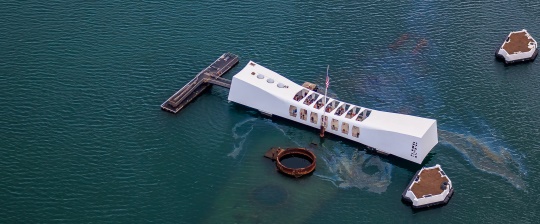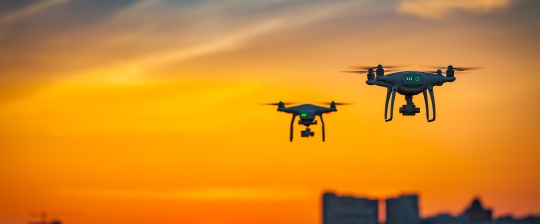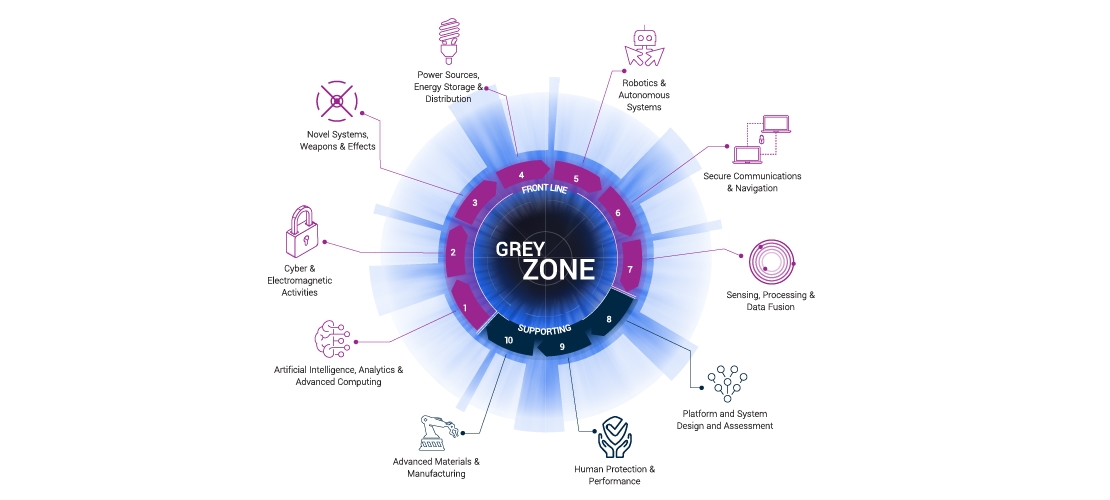The supremacy of traditional security and defence systems has driven adversaries towards alternative methods. These ‘grey zone’ approaches include a myriad of new threats described by multiple buzzwords, from asymmetric to hybrid and from 5th generation to sub-threshold. All these make up the “grey zone” and explore the widest range of social, political, economic and military instruments available to achieve maximum effect - but without provoking a conventional response, or even being recognised as formal acts of aggression.
Countering this requires significant change in a number of areas – from risk appetite, to the equipment used, and the skills employed. Technology will play an increasing role in how nations adapt their existing capabilities to fit the way in which adversaries now behave.
This report, Confidence in Chaos: How to use emerging technologies to combat grey zone threats, has been developed to provoke a new dialogue around how organisations can harness the potential of emerging technology to successfully adapt conventional defence and security capabilities and mitigate the impact of adversarial grey zone campaigns – be they organized criminal gangs, international terrorist cells, or nation states. It is based on the breadth of QinetiQ’s (and our partners’) technology and engineering expertise, plus our deep understanding of international defence and security requirements, and our experience of creating, testing and using new ways to protect what matters most.
Existing analyses tend to focus on where this type of conflict has come from and the challenges it presents. This report is different. It recognises that adding to that debate is not going to address the issue. Instead it explores the practicalities of countering grey zone campaigns now, by using the right combinations of emerging technology to adapt existing capabilities and make them better suited to neutralising such threats.
This report will:
- Outline the common challenges that grey zone activity presents to both defence and security organisations, and the most common modes of grey zone activity today;
- Offer the ten most promising types of technology which offer the greatest potential for adapting existing capabilities to these new threats;
- Provide guidance on how to bring these technologies together in the right combinations for known grey zone scenarios;
- Provide recommendations on how to adopt these technologies in a safe and assured way.
Download the full summary here
Infographic
This infographic outlines the five modes of grey zone hostility.
It includes some real-world and hypothetical scenarios that represent grey-zone aggressions, paired with the current technologies and methods used to mitigate the threat, and emerging technologies which could be used to stop these dangers in the future.

Listen to our podcasts

Ep1: Introduction to the Grey Zone
In this podcast, we explore from the beginning, what the Grey Zone is, how and why it exists and more.

Ep2: The Growth of the Grey Zone
In this podcast, we talk to our Managing Director QinetiQ Australia, Greg Barsby exploring the Grey Zone from an Australian perspective, in particular the two growth areas of Cyber and Space.

Ep3: Common Challenges of the Grey Zone
In this episode, we delve into a section of our report that focuses on common challenges for defence and security organisations when addressing grey zone conflict, speaking to three QinetiQ experts and one from Inzpire.

Ep4: The role of Technology in the Grey Zone
In the fourth episode of the series, we speak to our Chief Technology Officer, Mike Sewart, talking through each technology area, how it relates to the grey zone and why it will make a difference in tackling the grey zone.

Ep5: The 5 Modes of Grey Zone
Our penultimate podcast of the Grey Zone series explores the five modes of Grey Zone hostility, examining how, when and why they should be applied. We then support each with relevant scenarios.

Ep6: Recommendations for the Grey Zone
In our final episode, we undertake four interviews on recommendations for the grey zone. We talk to our Land Strategic Engagement Director, Iain Harrison, our Test & Evaluation Global Campaign Director, Cathy O’Carroll, our Head of Technology Exploitation, Lisa Hunter-Yates and our Training, Mission and Rehearsal Global Campaign Director, Christina Balis.
The Growth of Grey Zone Campaigning

In the last decade, grey zone campaigning has become a recognised threat to Western nations. There are three fundamental global changes driving a significant shift from open warfare to sub-threshold tactics:
- Access to emerging technologies
- The growth of novel domains
- The emergence of a new world system
We look at each in turn, outlining their impacts on defence and security doctrine.
Download the Growth of Grey Zone Campaigning summary
The role of emerging technology in adapting to meet grey zone challenges
We have identified 10 technology areas that can help the West reclaim its advantage in the grey zone via technological superiority, without lowering legal and ethical standards.
They are grouped into:
- Front line technology areas (those deployed directly in grey zone competition)
- Supporting technology areas (those which indirectly assist grey zone operations; aiding the design, manufacture and assurance of front line technologies)

